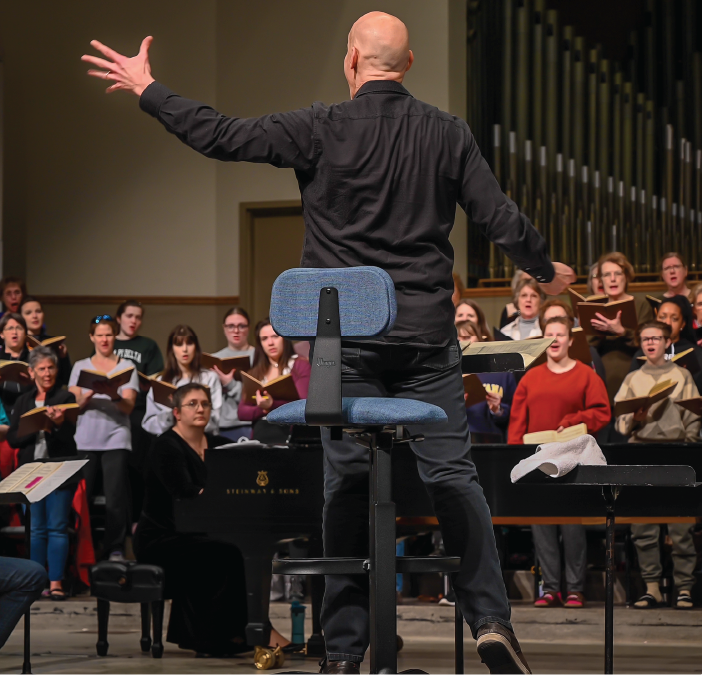Mortality. Death. Judgment. These themes will all be explored as the QCSO takes on Verdi’s enormous and dramatic Messa da Requiem on Masterworks V: Requiem in performances on March 7 and 8 in partnership with Augustana College’s Oratorio Society and Choral Artists.
A Requiem Unlike Any Other
A requiem is an act of token or remembrance. In the Catholic Church, a requiem is a mass for the dead and is often presented as a musical composition.
Many composers have written notable requiems—Mozart, Berlioz, Brahms, etc.—but few if any have reached the potency and drama contained within Italian composer Giuseppe Verdi’s Messa da Requiem.
“Verdi is an Italian opera composer. So, this piece is melodramatic and highly charged,” said QCSO Music Director and Conductor Mark Russell Smith. “It is the text of a requiem, but it’s a drama. The chorus is a big protagonist in this.”
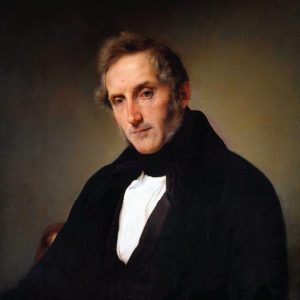
Alessandro Manzoni
Verdi began composing his Requiem in 1873 after hearing of the death of Italian writer and national hero Alessandro Manzoni. Verdi held immense respect for Manzoni, the two had briefly met a few years before in 1868.
“Manzoni and the composer Gioachino Rossini were two of the major cultural icons in Italy at the time that Verdi greatly revered,” said QCSO Executive Director Brian Baxter. “When Verdi was a kid, he had and cherished Manzoni’s writings. It made a real imprint on him at a young age.”
The piece premiered on May 22, 1874, and marked the first anniversary of Manzoni’s passing.
“For Verdi, writing a requiem mass is literally the height of what he could do to remember and honor somebody,” Baxter said.
Connecting Back to the Human Experience
The overarching theme connecting each Masterworks performance is the drama of the human experience. Masterworks V is no different as it inspects how human beings reflect on the end of life.
“We’ve looked at conflict, passion, and love—but reflecting on mortality and immortality is a vital aspect of humanity,” Smith said. “It’s something that everybody does in one way or another.”
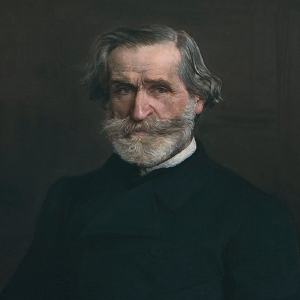
Giuseppe Verdi
Verdi’s Requiem tackles end-of-life through intensely religious themes, though highly dramatized in such a way that reflects his love for the opera.
One of the most stunning and powerful movements is the Dies Irae section. It reeks of pure terror, channeling the uncertainty and fear that come with the Day of Judgement. It is by far the strongest movement of the piece, requiring so much intensity from the orchestra to truly invoke the emotions Verdi intended to capture.
“Verdi’s Requiem is much bigger than memorializing Mansoni,” Smith said. “Verdi’s expression is universal. He is speaking about universal truths and universal feelings; it’s a portrait of the human experience of thinking about death, about being terrified by the day of judgment, and being comforted by the words that are in the Bible and by religion.”
While the piece undoubtedly relies on a sense of fear, there are moments of hope. As it moves into Lux Aeterna, meaning eternal light, the audience feels comfort and a possibility of salvation—of something more beyond death.
“When it comes to death when it comes to individuals passing, there’s quite a range of emotions,” Baxter said. “This piece covers it all. You will experience sounds of sorrow, joy, and terror in real intensity.”
A Chorus that Moves
Verdi’s Requiem requires not only a skillful orchestra but a powerful chorus that can meet the demands of such an intense piece. That’s why QCSO partnered with Augustana College’s Oratorio Society and Choral Artists. Directing the chorus is Augustana College Professor Jon Hurty.
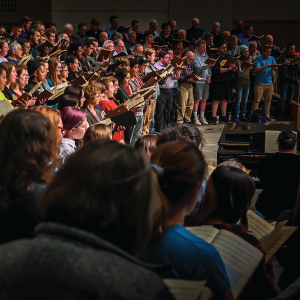 “The chorus is an incredibly important part of this work. And it needs to be a robust, large chorus,” Baxter said.
“The chorus is an incredibly important part of this work. And it needs to be a robust, large chorus,” Baxter said.
“The chorus sings for the majority of the piece. Everything is in Latin. And with that, there are all the challenges with language and diction that really require the chorus to prepare on a range of levels before they even get to a rehearsal with the orchestra.”
Featured are soloists Alexandria Shiner, soprano; Daryl Freedman, mezzo-soprano; Robert Stahley, tenor; and Steven Humes, bass.
“It’s a long process for the chorus to learn a huge piece like this,” Smith said. “And Jon is an expert at pacing the rehearsals and getting people prepared in what they need to do. We rehearse Thursday, Friday, and Saturday–and then perform that evening. It all has to come together really quickly.”
The End-of-Life Journey
Verdi’s Requiem is a dramatic undertaking requiring both the orchestra and chorus to push its limits, taking the audience on an end-of-life journey. For anyone who’s experienced loss or questioned the nature of their own mortality, Masterworks V rings with a shared truth.
“The audience will be moved. They will be caught up in the drama,” Smith said. “They will be transported right along as we’re screaming about the Day of Judgement and thinking about the comfort of Christ. They will be taking an incredibly dramatic journey.”
EVENT DETAILS
Masterworks V: Requiem
March 7, 2020 | 8:00 p.m.
Adler Theatre
136 E 3rd St | Davenport, IA
March 8, 2020 | 2:00 p.m.
Centennial Hall
3703 7th Ave | Rock Island, IL
Purchase Tickets | $18 – $65 Adults each | $10 – $33 Students each
Enrich Your Experience
INSIDE THE MUSIC
Join QCSO Music Director Mark Russell Smith in an exploration of the Masterworks programs on Thursday evening preceding each Masterworks concert. Doors open at 4:45 p.m. Free Admission. Cash Bar. Sponsored by Hotel Blackhawk.
CONCERT CONVERSATIONS
One hour before each Masterworks performance, concert-goers are invited to attend informal pre-concert conversations to hear about the works being presented. Hosted by Kai Swanson. Sponsored by Chris Connoly, Wells Fargo Advisors
AFTERGLOW
Mingle with Maestro Mark Russell Smith, guest artists, and members of the QCSO immediately following the Saturday Masterworks performances. Free Admission. Cash Bar. Hosted at the Hotel Blackhawk
